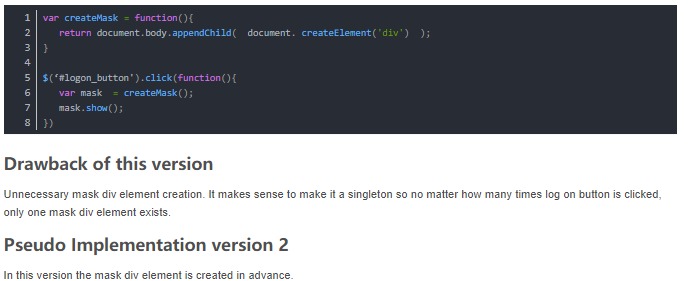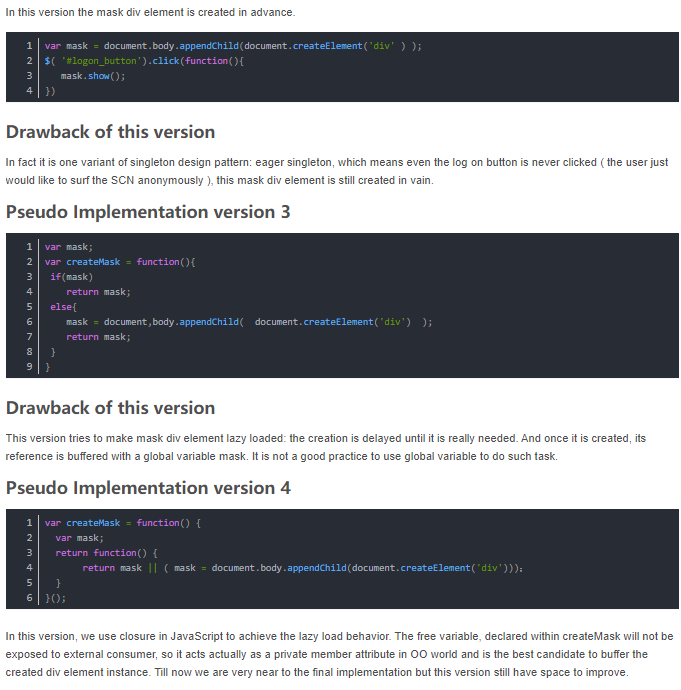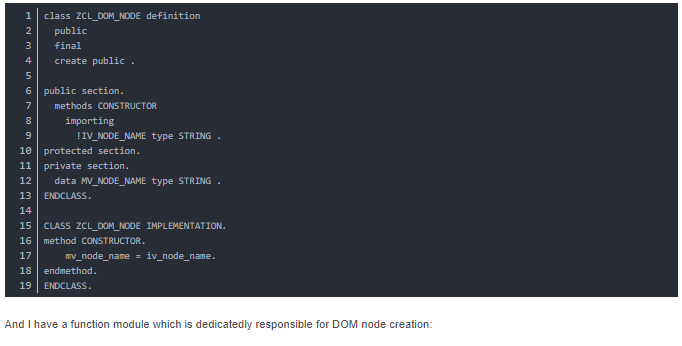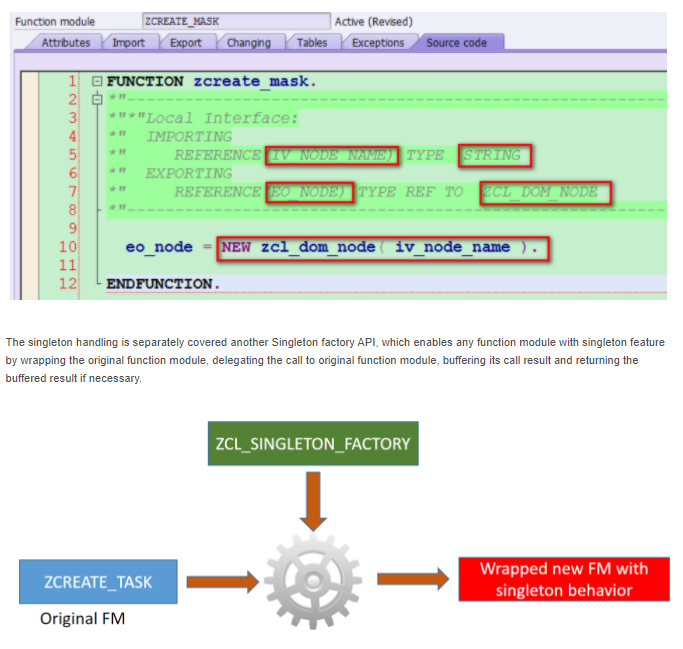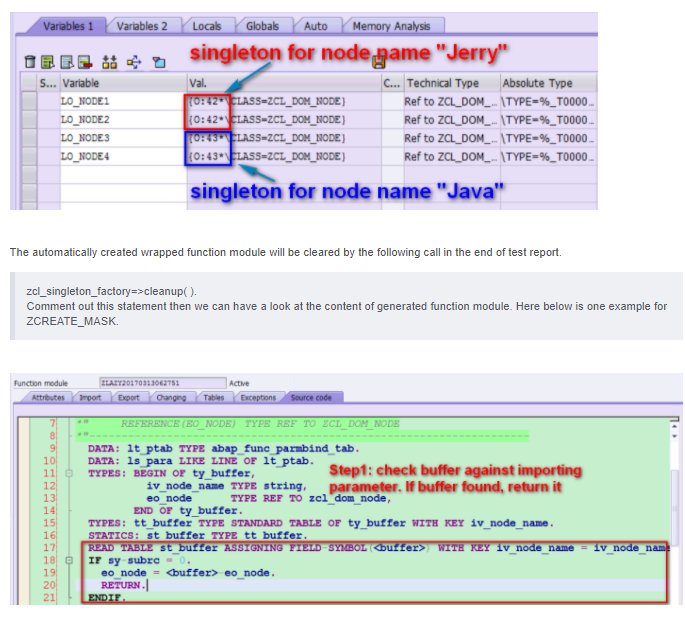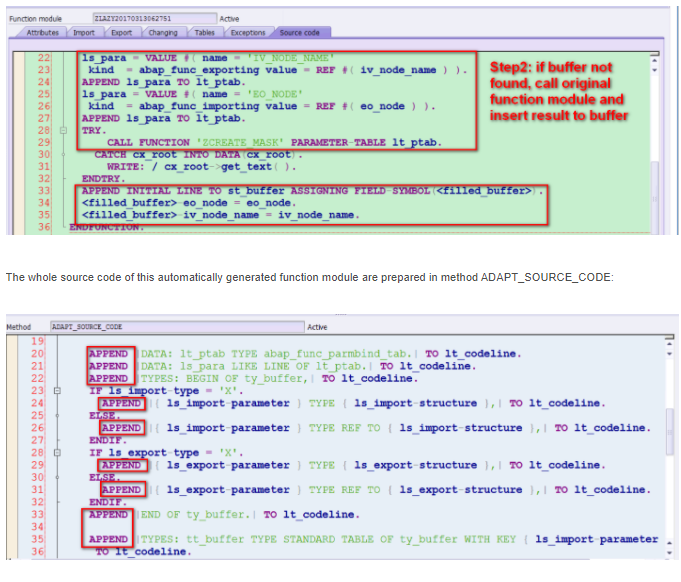According to Wikipedia Lazy loading is a design pattern commonly used in computer programming to defer initialization of an object until the point at which it is needed. It can contribute to efficiency in the program’s operation if properly and appropriately used.
In this blog, I will use an example of SCN log on to illustrate its usage in JavaScript and how to simulate the implementation in ABAP.
When we click log on link in SCN:
Let’s assume that SCN creates a dummy div element with proper CSS style to achieve this mask effect. Of course the productive implementation might be completely different and more complex.
Pseudo Implementation version 1
Suppose we have a log on button with a click event handler. Every time it is clicked, a new mask div element is created.
Drawback of this version
From single responsibility principle point of view, the function createMask mixes the mask div element creation with element buffering. Is there any approach to decouple these two different tasks?
Pseudo Implementation version 5 – the final one
In this version we use a Bridge design pattern to decouple the concrete staff ( mask div element creation ) with the abstract staff ( created element must be singleton ), so that each staff can change independently without influence on the other.
Lazy Loading in ABAP
In ABAP actually it is also very easy to implement Lazy Loading: we just declare some private member attribute in class or static variable in function module for instance buffer. Nevertheless, let’s try to simulate the implementation done in JavaScript with Bridge pattern, in order to deepen our understanding on Bridge pattern as an ABAPer.
I have a dummy class to simulate DOM node:
Let’s first see what is achieved in ABAP.
This is a test report:
REPORT zsingleton_test. DATA(lv_new_fm) = zcl_singleton_factory=>get( iv_func = 'ZCREATE_MASK' ). DATA: lo_node1 TYPE REF TO zcl_dom_node, lo_node2 TYPE REF TO zcl_dom_node, lo_node3 TYPE REF TO zcl_dom_node, lo_node4 TYPE REF TO zcl_dom_node. CALL FUNCTION lv_new_fm EXPORTING iv_node_name = 'Jerry' IMPORTING eo_node = lo_node1. CALL FUNCTION lv_new_fm EXPORTING iv_node_name = 'Jerry' IMPORTING eo_node = lo_node2. CALL FUNCTION lv_new_fm EXPORTING iv_node_name = 'Java' IMPORTING eo_node = lo_node3. CALL FUNCTION lv_new_fm EXPORTING iv_node_name = 'Java' IMPORTING eo_node = lo_node4. zcl_singleton_factory=>cleanup( ).
A new function module is dynamically generated by ZCL_SINGLETON_FACTORY based on original function module ZCREATE_MASK. The new function module name is stored in variable lv_new_fm.
The new function module has exactly the same signature as ZCREATE_MASK. When it is called, we can observed that the singleton is fulfilled.
The main idea of the function module automatic generation is very similar as introduced in my blog Functional programming – Simulate Curry in ABAP.
Summary
In JavaScript, it only takes 6 simply lines to get a singleton factory which can wrap any function to behave with singleton functionality. In fact this is implemented via closure in JavaScript.
And in ABAP, due to lack of support in language perspective, I spend totally 351 lines of ABAP codes for simulation.
Hope this small simulation can help you as ABAPers to understand some language features in JavaScript.
Further reading
I have written a series of blogs which compare the language feature among ABAP, JavaScript and Java. You can find a list of them below:
Lazy Loading, Singleton and Bridge design pattern in JavaScript and in ABAP
Functional programming – Simulate Curry in ABAP
Functional Programming – Try Reduce in JavaScript and in ABAP
Simulate Mockito in ABAP
A simulation of Java Spring dependency injection annotation @Inject in ABAP
Singleton bypass – ABAP and Java
Weak reference in ABAP and Java
Fibonacci Sequence in ES5, ES6 and ABAP
Java byte code and ABAP Load
How to write a correct program rejected by compiler: Exception handling in Java and in ABAP
An small example to learn Garbage collection in Java and in ABAP
String Template in ABAP, ES6, Angular and React
Try to access static private attribute via ABAP RTTI and Java Reflection

